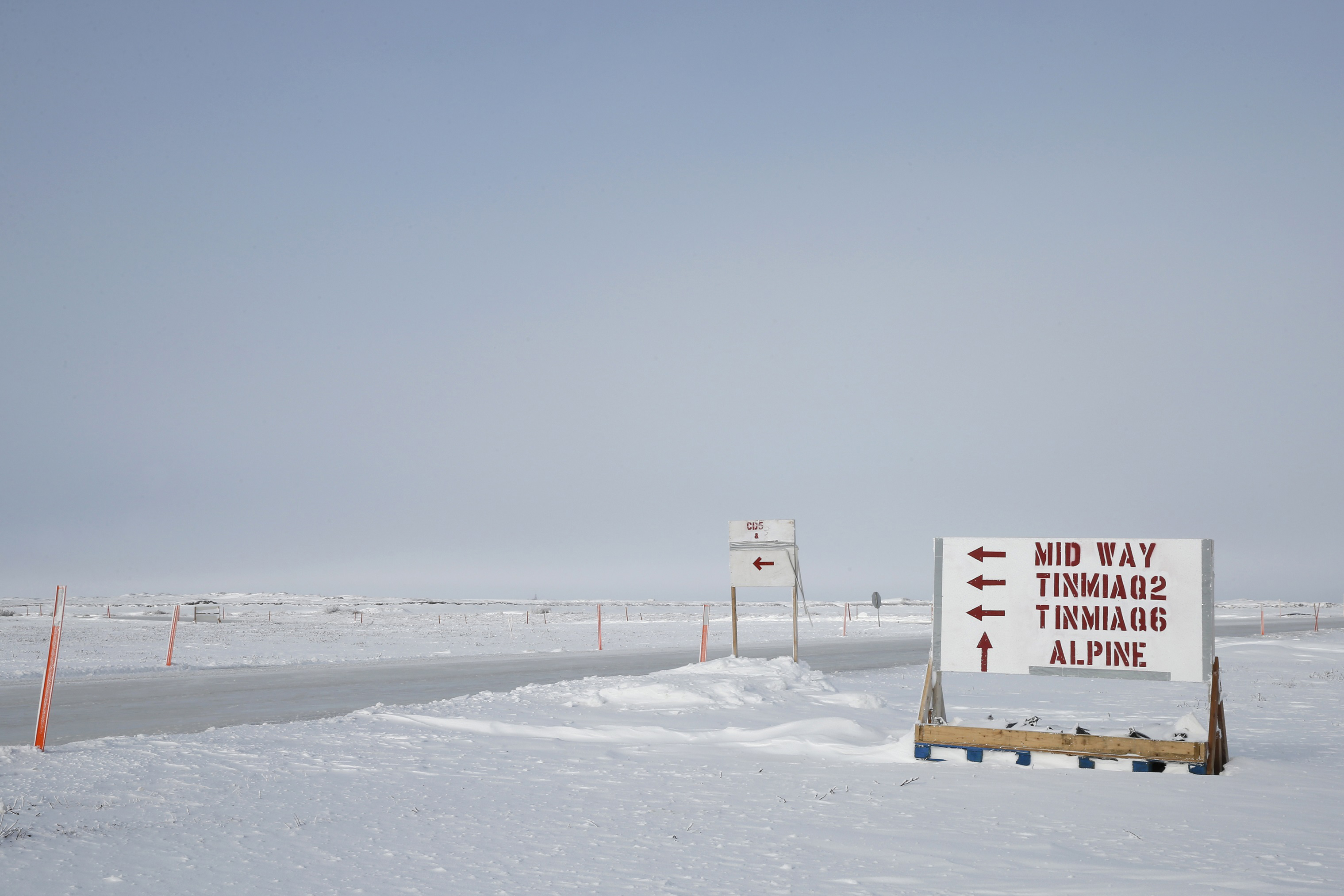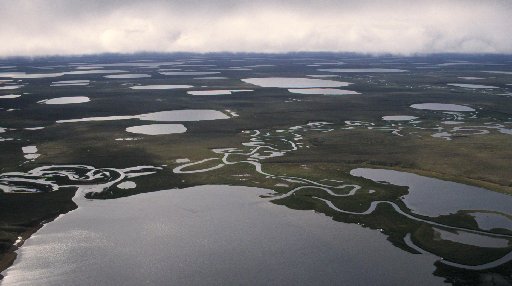Government scientists just dramatically increased their estimates for how much oil Alaska’s North Slope might hold

The National Petroleum Reserve in Alaska and nearby state- and Alaska Native-owned lands on the western part of Alaska’s North Slope hold much more oil than previously believed, according to a new report issued Friday by the U.S. Geological Survey.
The new USGS estimate, influenced by exploration successes in the region and produced in accordance with an order from Interior Secretary Ryan Zinke, put the mean estimate for technically recoverable oil in those onshore areas at 8.7 billion barrels.
That is nearby six times the 1.5 billion barrels that the USGS considered the mean estimate for oil in NPR-A and adjacent state and Alaska Native lands seven years ago.
An accompanying report from the Bureau of Ocean Energy Management also increased the mean estimate for undiscovered oil in federal waters of the Beaufort Sea from the 8.22 billion-barrels mean estimate reported in 2016 to 8.9 million barrels.
Zinke, who called for new oil and gas estimates for all of the North Slope as part of his sweeping Alaska energy order issued in May, said the updated information supports the push for new oil drilling there.
“Thanks to the incredible work of scientists at the USGS and BOEM, we know what’s available and what our potential is. That’s important because with the scientific knowledge, industry partners are more willing to explore the area,” Zinke said in a statement. “New discoveries have changed our geologic knowledge of the area — and these assessments show that the North Slope will remain an important energy hub for decades to come in order to meet the energy needs of our nation.”
Alaska politicians also said the new resource assessments support the push for more drilling.
Sen. Dan Sullivan, an Alaska Republican, invoked the Trump administration’s “energy dominance” slogan.
“The good news for Alaska and America’s energy dominance continues,” Sullivan said in the Interior statement. “Alaska’s vast resources offer a superior opportunity for us to provide jobs, energy, and security to our nation and our allies. This updated assessment by the USGS and BOEM shows that the resources are there and the time is now to invest in our vast Arctic energy potential.”
“Just as we have always known, this assessment shows that the NPR-A has significant potential and will remain a big part of our energy future,” Sen. Lisa Murkowski, a Republican who chairs the Senate Energy and Natural Resources Committee, said in the Interior statement. “I thank Secretary Zinke for traveling to this area with me earlier this year, for directing USGS to update its resource assessment, and for working with Alaskans on a better plan for responsible development.”
The updated estimates are based on a flurry of recent exploration and major discoveries along two geologic formations: Nanushuk and Torok.
The Nanushuk formation appears to be particularly rich. It is the source of some large new prospects. One of those is Willow, which is within NPR-A, was discovered by ConocoPhillips in 2016 and is estimated to hold 300 million recoverable barrels of oil. The Nanushuk Formation also holds the Pikka unit and Horseshoe prospect, which were discovered by Repsol and Armstrong on state territory just east of the NPR-A border, and are believed to hold 1.2 billion barrels.

Estimates for NPR-A oil have fluctuated widely in the past 15 years.
In 2002, when the modern wave of NPR-A exploration was only beginning, the USGS put the mean estimate for undiscovered but recoverable oil at 9.3 billion barrels. In 2010, the USGS pared that back significantly, to a mean estimate of 896 million barrels of recoverable oil.
In a November speech to the Resource Development Council for Alaska, USGS senior geologist David Houseknecht, leader of the agency’s North Slope resource assessment efforts, said a new evaluation of oil potential was already in the works even before Donald Trump’s election as president in 2016.
Recent exploration successes related to the Nanushuk and Torok formations have changed the understanding of reservoir characteristics, Houseknecht said in his Anchorage speech. “We were aware, well over a year ago, that we needed to learn more about those formations and update the assessment that we published in 2010,” he said.
Previously, Houseknecht said, geologists considered these formations, which do not have the oil-trapping rock folds or faults found in other North Slope formations, to lack economically viable quantities of oil. But the thinking started to change after the 1990s-era discovery of the Alpine field on state land near NPR-A and the subsequent discoveries within NPR-A, the thinking changed, he said.
“What we’re seeing now is the focus on successful exploration of stratigraphic traps, which are much more subtle. They’re simply the geometry of the rocks as they were originally deposited. You do not need folds or faults in order to trap the oil and gas,” he told the RDC. “So this has really revolutionized exploration on the North Slope.”
The Nanushuk and Torok formations extend offshore, but they are only “minor contributors” to the Beaufort Sea outer continental shelf region, according to an accompanying resource estimate issued by BOEM.
With the new evaluation of the Nanushuk and Torok formations, the total mean estimate for Beaufort Sea recoverable resources increased by 680 million barrels of oil and about 100 million cubic feet of natural gas from estimates published by BOEM in 2016.
Not included in Friday’s information was any new estimate for oil in the Arctic National Wildlife Refuge, which Congress opened to oil leasing in a provision in the sweeping tax overhaul signed Friday by President Trump.
Zinke’s May order included a mandate for a new ANWR resource estimate to update information released decades ago. The USGS’s past mean estimate for oil in the ANWR coastal plain was 10.36 million barrels. In his November speech, Houseknecht said the USGS is reviewing its past analysis of the coastal plain’s oil potential, but that there is “no new data in the last 20 years to significantly change our perspective.”
Other provisions of Zinke’s order started eliminated offshore environmental protections imposed in the Obama administration and started the process of opening up protected lands within NPR-A to new oil leasing.